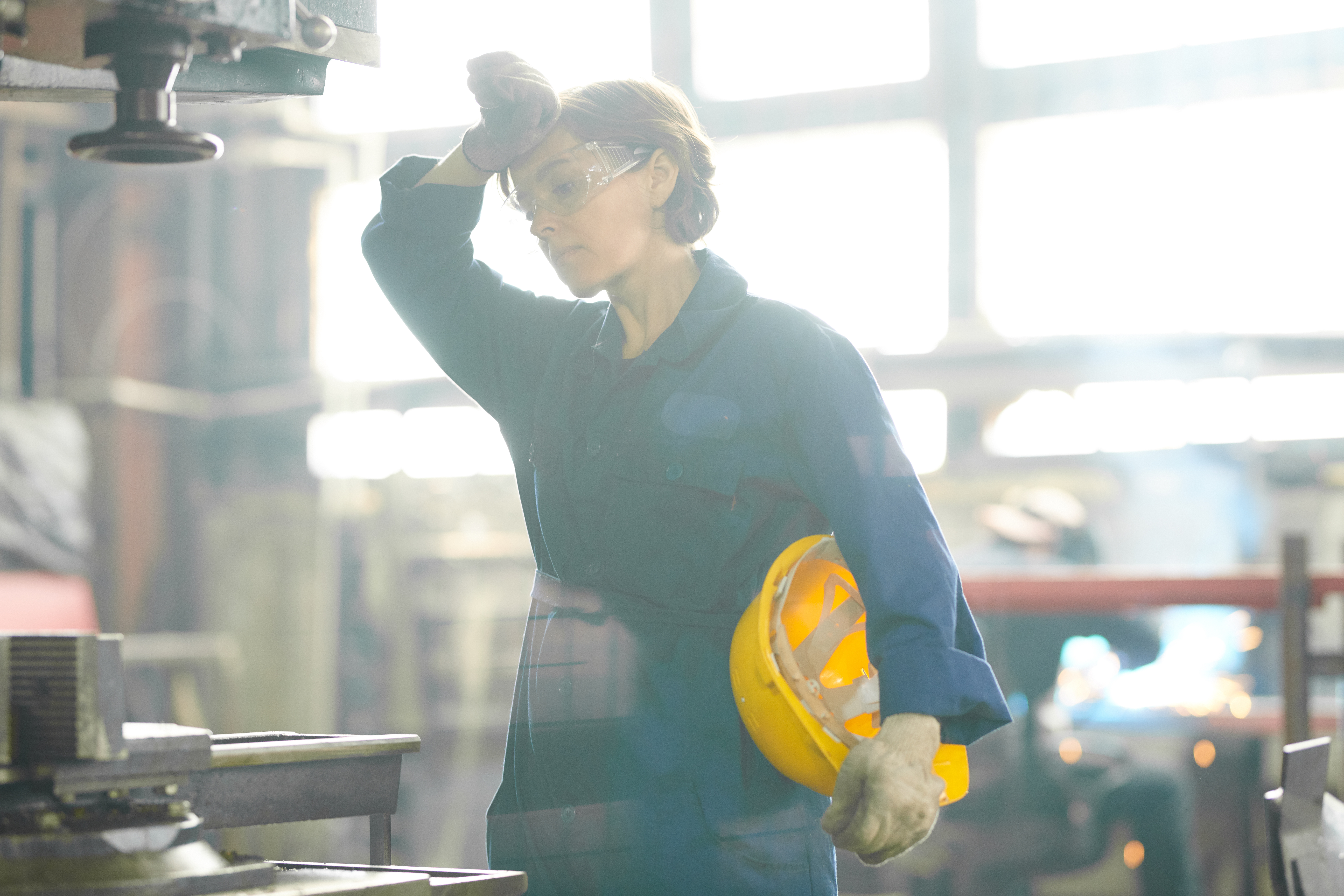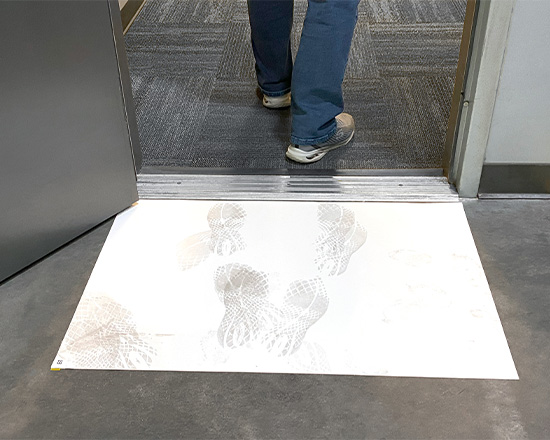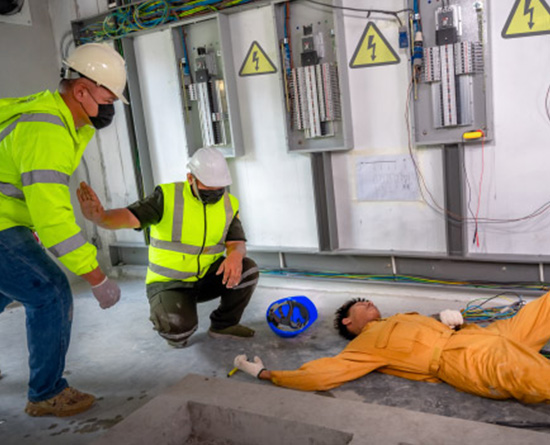What do you think of when you hear "anti-fatigue?"
When you hear ‘anti-fatigue,’ you might think of going to bed early, feeling tired, or that 2pm caffeine break. But for heavy duty laborers, anti-fatigue has a much different meaning. For these folks, it means getting work done more efficiently, and feeling better during (and after) the workday.
Anti-fatigue products provide benefit for heavy duty workers. It helps with their performance, aches and pains, morale, and overall readiness for work. Anti-fatigue mats (and floors) are some of the only anti-fatigue products in existence. Can you think of any others?
Determining when an anti-fatigue mat is beneficial:
Ideally, all work surfaces should benefit standing workers. Workers should be able to work comfortably with safe footing. To figure out which mat will be the best, you must consider your environment, budget, and purpose of use. Determination should then be based off of this combination of your goals, work environment, foot traffic, and budget.
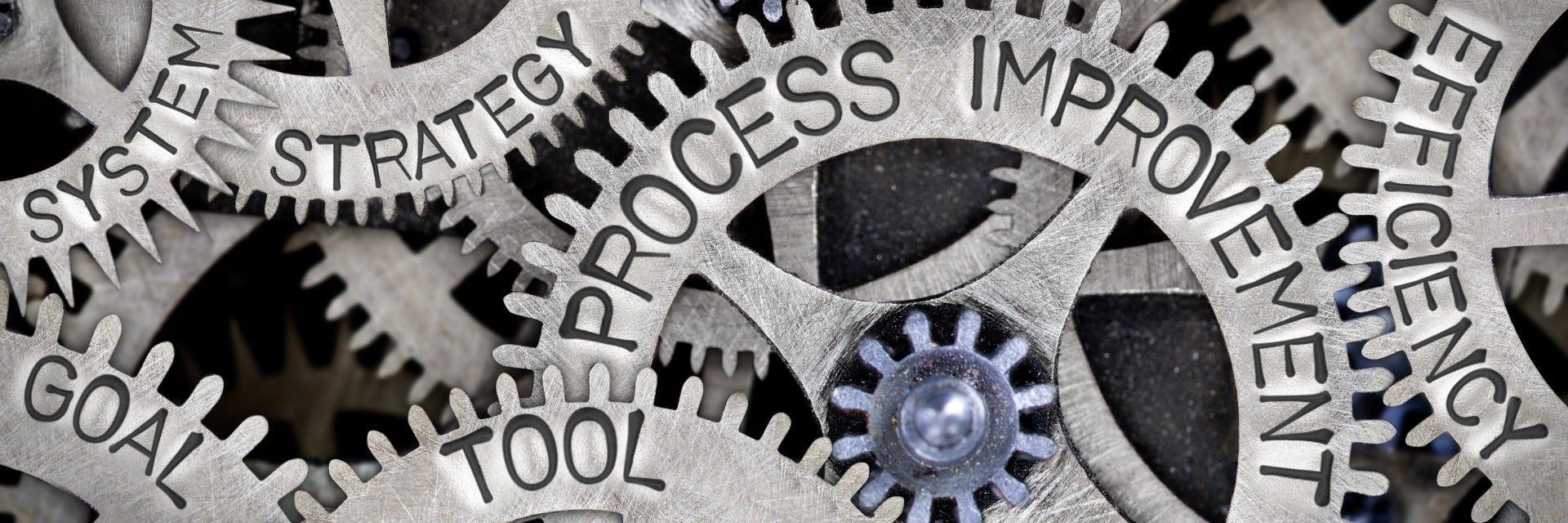
Goals:
Do you have goals to decrease aches and pains? Reduce slips and falls? Decrease absenteeism? Determining these goals upfront, and discussing them with a matting representative, can be an important step in finding out your options. Different products have been specifically designed to address unique needs. It always pays to know out what’s out there, and it doesn’t hurt to get a free professional recommendation on what might be the best fit.
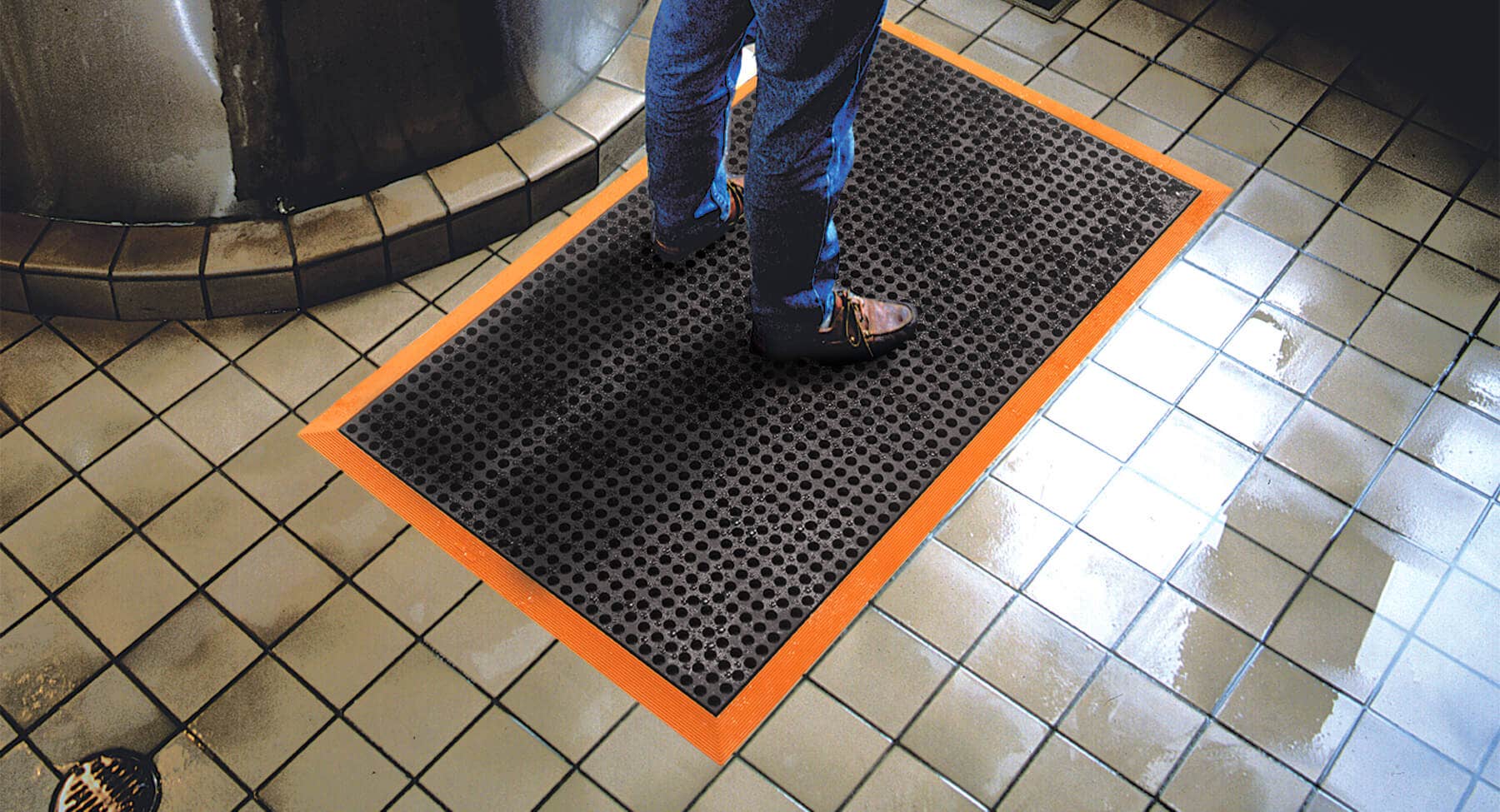
Work environment
Not all work environments are alike, and there are different mats made for different areas- including medical, fulfillment, food service, and general manufacturing. In manufacturing, anti-fatigue mats are important to promote productivity and prevent slips. In food service, anti-fatigue mats need to support workers while simultaneously preventing the growth of dangerous microbes. In labs, anti-fatigue mats need to stand up to small chemical spills, and provide ergonomics for people working long hours.
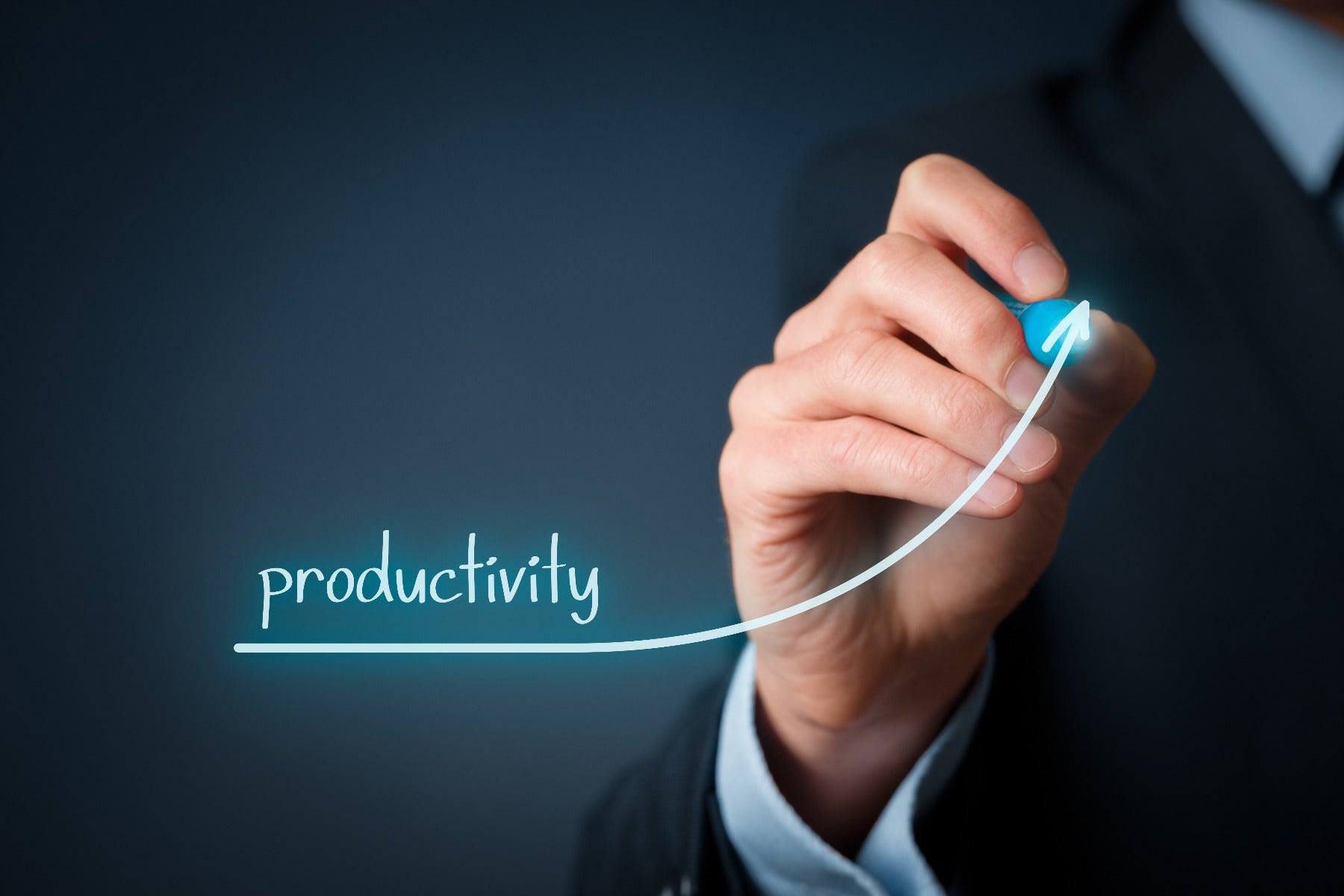
Productivity:
Productivity goals are critical. Scaled across all employees over a full year, hitting your goals can make a massive impact on the bottom line. If you have productivity goals, what active steps are you taking to achieve them? Have you ever thought about anti-fatigue mats as a way to do this? When Weawell implemented matting at a major automotive plant, their overall productivity increased by 2.2% after just one year!
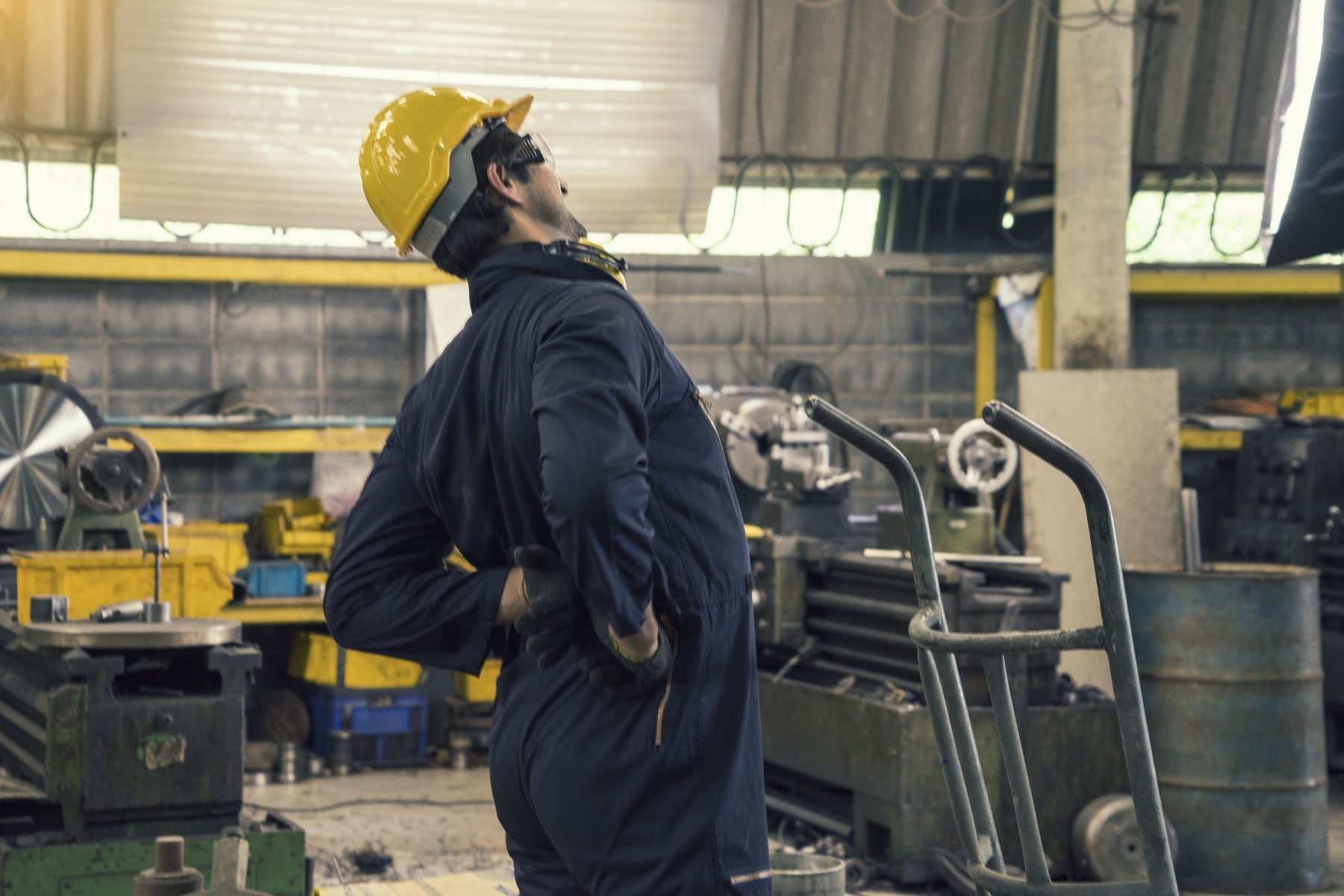
Aches and pains
If your workers are experiencing aches and pains- concrete (or even the wrong mat) is often to blame. Concrete is cold and unforgiving. Standing for an entire shift can cause pain foot pain. In the best outcome this will slow down productivity. But in the worst scenario, this can lead to distraction, absenteeism, or a fatally bad decision. Foot pain causes workers to adjust the way they move to avoid that pain- a self-fulfilling cycle furthering their pain. Simply put, when workers are in pain, they cannot work as safely or productively.

Morale problems
Morale can be difficult to measure, and even harder to manage and change. If you have workers that seem to be affected by low morale, it may have as much to do with how they feel physically, as how they feel mentally. When workers are overexerted, their bodies become worn down. An old proverb says: “When the body goes, the mind goes with it.” It is harder for these folks to spend time with family and do normal chores while they are in pain.
Taking active steps to relieve workers of their pain will help them perform better, but from a morale perspective, it shows that you are committed to spending company dollars for the workers’ wellbeing. This can boost morale, and save on turnover costs!
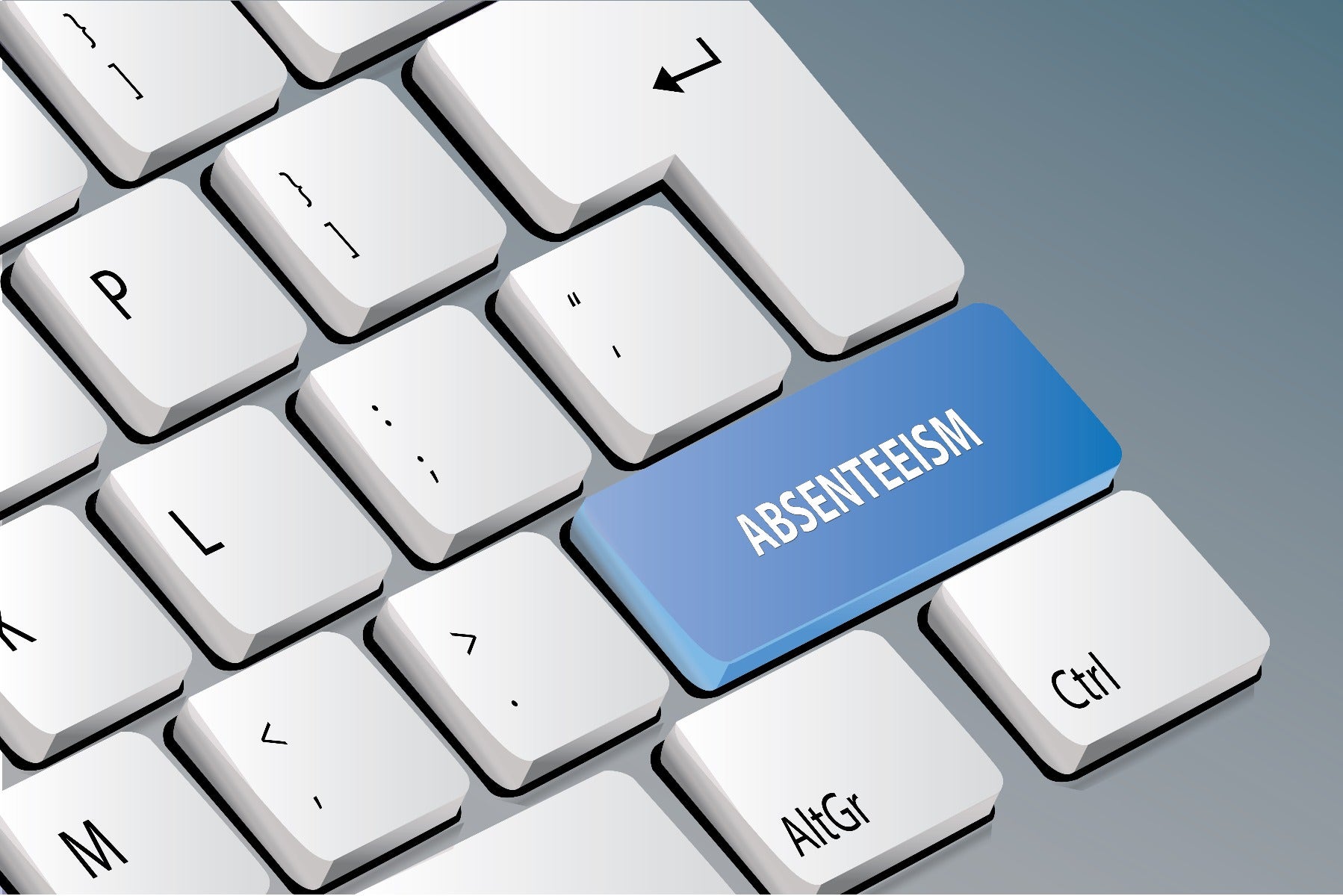
Absenteeism
Absenteeism is a huge cost in any industry. Are you aware of your absenteeism rate and its overall cost? Perhaps you have been working on your absenteeism rate, absenteeism goals, and are looking for some ways to improve. After all, if you improve absenteeism, you improve productivity as well as your bottom line. The average in our industry is about 3%. When Wearwell anti-fatigue mats were implemented at a large automotive manufacturer, they measured that their absenteeism dropped by 20% over the course of one year!

Budget
Because of the small but cumulative effects mentioned above, you should think of anti-fatigue matting as an investment. As with anything, budget is a critical consideration to this. If working with a smaller budget, it’s important to put emphasis on doing the most good for the most people, safely. The areas where workers are standing for long periods of time are a good place to start, as are the areas where they struggle with slips and falls.

Foot traffic
If you already know you need a mat, Foot traffic is key to determining what kind. If the worker is standing in one place most of the day, they will benefit greatly from a standalone anti-fatigue mat. If the worker is walking up and down an assembly line or aisle, they would benefit from a long anti-fatigue mat (often called a roll), or an anti-fatigue floor like ErgoDeck. When deciding on a mat, it is important to choose a product that is up to the job at hand. Certain products are great for light work, but would not hold up to 2 or 3 shift environments. Other products are created specifically for 24/ 7 workplaces, and are the best in the business for fatigue relief.
Overall, each of these factors plays its own part into when anti-fatigue mats should be used. Each company is different, and so are your workers! It is important to be properly educated on the varying styles and benefits of anti-fatigue matting. In a perfect world, there would be anti-fatigue matting for every worker. We don’t live in a perfect world, but we can help you get started.
Prevent. Perform. Compete. Wearwell.


